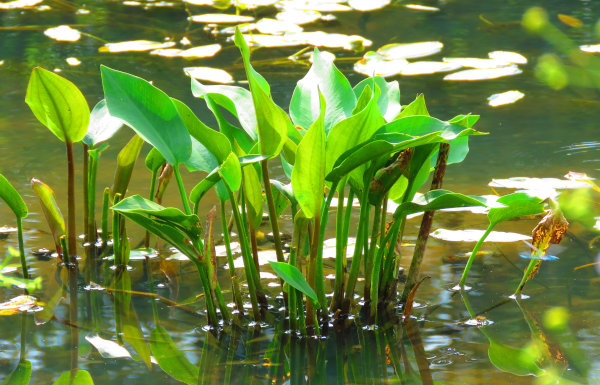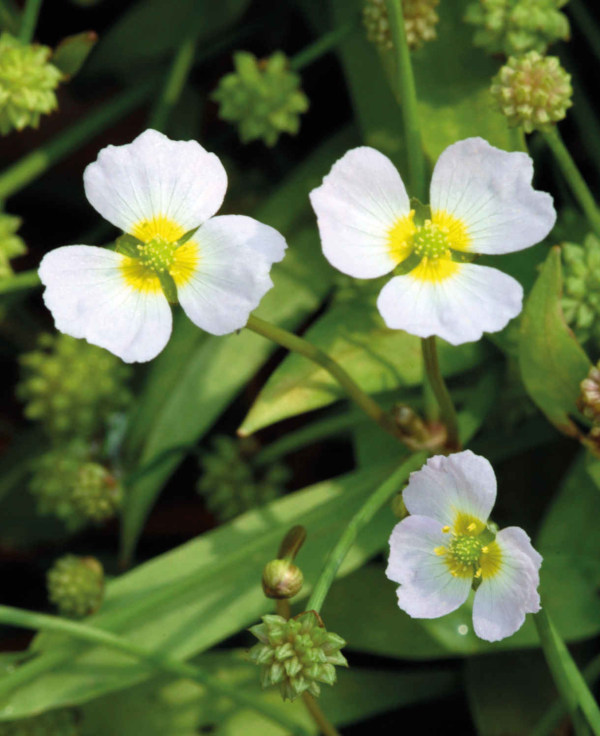How to grow Baldellia
Baldellia is a genus of aquatic plants of which there are three species, all commonly known as lesser water plantain. It is one of those plants that the experts haven’t quite made their minds up about yet and is sometimes included in other genera such as alisma, echinodorus, or sagittaria.
We’re sticking with baldellia, and are most specifically looking at Baldellia ranunculoides which is a British native species popularly grown as a pond or bog garden plant. Best grown at a depth of around 5cm, this dainty little plant bears narrow, plantain-like leaves and clusters of delicate, solitary, pale lilac-pink flowers held on wiry stems from May to August. It is an herbaceous perennial, so can be expected to die back for winter then reappear the following spring.

Key Information
Position
Soil Conditions
Hardiness


Where & when to plant Baldellia
For best results, plant marginal aquatic or bog plants in late spring to early summer when the water is beginning to warm up. This gives them the best chance at establishing well.
Baldellia is a small, delicate plant suitable for still or moving water up to 5cm deep, so at the shallow edges of a small pond or stream. A bog garden is another suitable spot, as is a water plant container feature. It can be grown directly into soil, or in an aquatic planting basket or hessian bag filled with a specialist compost.
How to plant Baldellia
When planting in water we recommend a planting depth of 5cm, which refers to the distance between the surface of the soil/ compost and the surface of the water. Don’t worry if this means the foliage is partially submerged – the plant will grow happily in this way with the added benefit of oxygenating the water. There is no need to submerge the plant in a bog garden, it will do perfectly well on the surface.
- If planting directly into soil, choose a spot in the shallows where the water is about 5cm deep, or in a bog garden.
- Clear the area of weeds.
- Dig a planting hole several times larger than the root ball, putting any spoil in a bucket.
- Place the plant in the hole, ensuring the top of the root ball sits level with the surface of the soil.
- Backfill with the spoil and firm in gently.
- If submerged in water, place rocks, pebbles, or a layer of fine gravel around the base of the plant to weigh it down until its roots establish.
- If using an aquatic planting basket, choose one at least 11cm across for one plant, or group several together in a larger basket. Unless it has very fine mesh, line with hessian or polypropylene fabric to prevent the compost from washing out. Alternatively, a hessian bag makes a plastic-free alternative to a planting basket.
- Part fill with a specialist aquatic compost. Resist the temptation to use normal potting compost, as this contains fertilisers which will leach out into the water and harm the aquatic ecosystem.
- Position the baldellia in the basket or bag so it sits at the same depth as in the original container.
- Infill around it with more aquatic compost, firming in as you go.
- Mulch with grit or fine gravel to prevent the surface of the compost becoming stirred up into the water.
- Submerge into the water, ensuring the top of the basket or bag remains no more than 5cm beneath the surface of the water. You may need to weigh down with rocks until the compost becomes fully saturated, after which it should remain in place.

How to care for Baldellia
Pruning and Deadheading
This plant will die back naturally for winter and regrow in spring. If you wish to cut and clear away the spent foliage and flowers, try to do this in autumn to avoid disturbing the spring breeding habits of aquatic wildlife.
Watering
Keep an eye on the water level of ponds and water container displays, topping up if necessary (preferably with harvested rainwater).
Bog gardens should also be monitored and may need watering during very hot, dry spells to maintain consistently damp conditions.
Feeding
No additional feeding required.
Cold Protection
Baldellia ranunculoides is a British native and therefore able to survive the average winter here without the need for any special attention.
Pests and Diseases
Baldellia is considered problem-free.
How to propagate Baldellia
Established clumps can be divided in April or September. Allow at least 2-3 years between each division so plants can sufficiently re-establish.
- Choose a day when conditions are not frozen.
- Dig the plant out of the ground or remove it from the planting basket.
- Shake off any excess soil.
- Separate the plant into sections using either by teasing apart with your hands, or two forks inserted back-to-back with tines touching, handles then pushed together to prise the plant apart. If the rootball is very congested, a sharp serrated knife can be used to cut it into pieces, ensuring each has a growing tip and good amount of roots.
- Discard old, damaged, or surplus pieces, keeping healthy, vigorous material.
- Replant or repot selected pieces, as above in ‘How to plant baldellia’.
* Many plants carry Plant Breeders Rights and cannot be propagated for commercial purposes.
Common questions about Baldellia
- How to do you tell Baldellia ranunculoides apart from Ranunculus flammula (lesser spearwort)?
These two plants look very similar when not in flower. A distinguishing feature of baldellia is a coriander-like aroma when its leaves are crushed.




